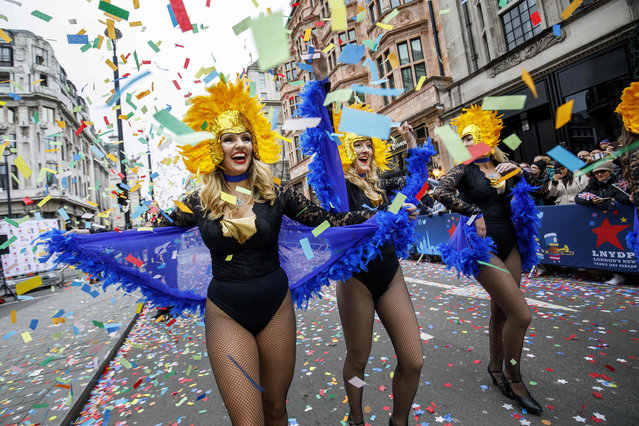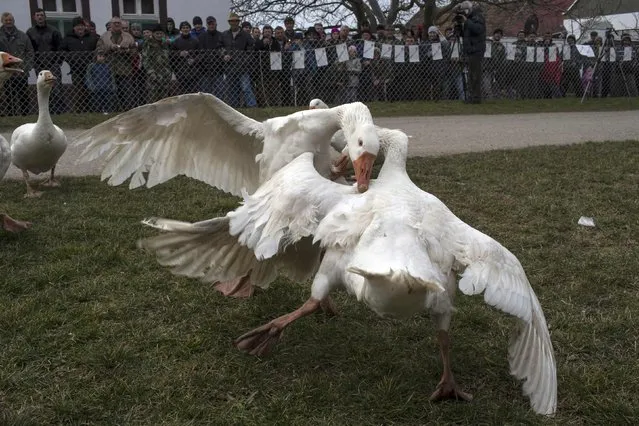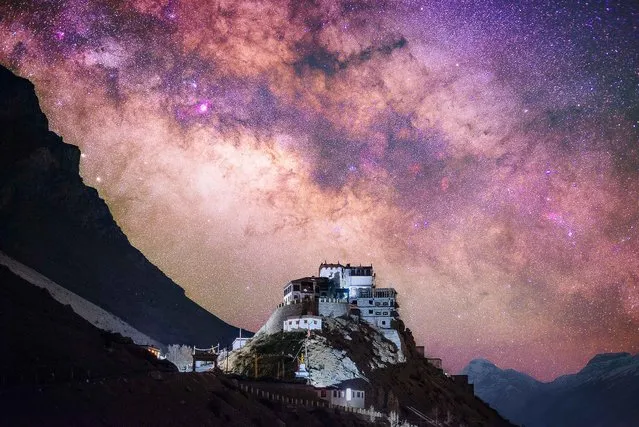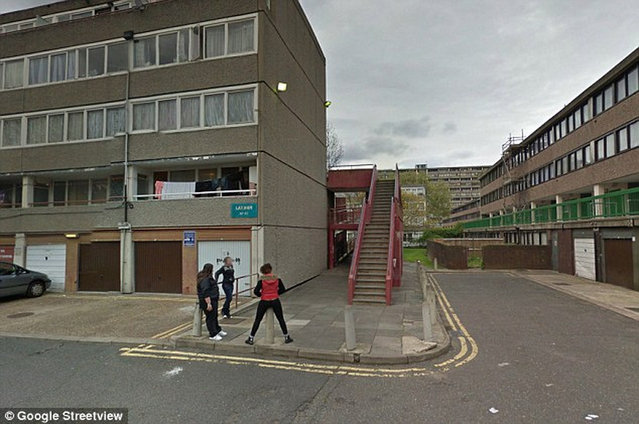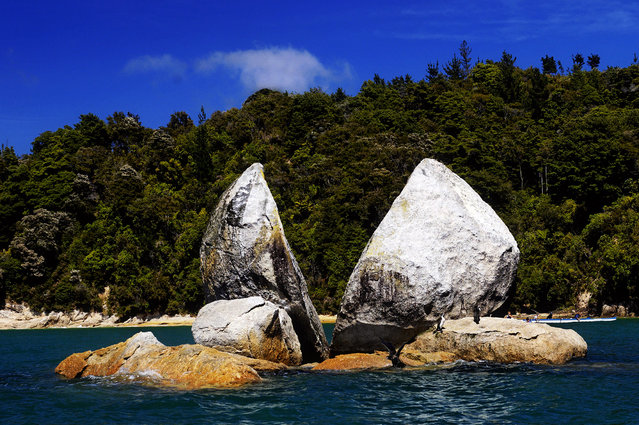
An inmate with a tattoo of Santa Muerte (The Saint of Death) reacts in the Topo Chico prison, during a media tour, in Monterrey, Mexico, February 17, 2016. The director of a prison in northeast Mexico where 49 people died in a riot this week was accused of murder and detained, along with two others, a state prosecutor said on Saturday. (Photo by Daniel Becerril/Reuters)
19 Feb 2016 12:20:00,post received
0 comments

